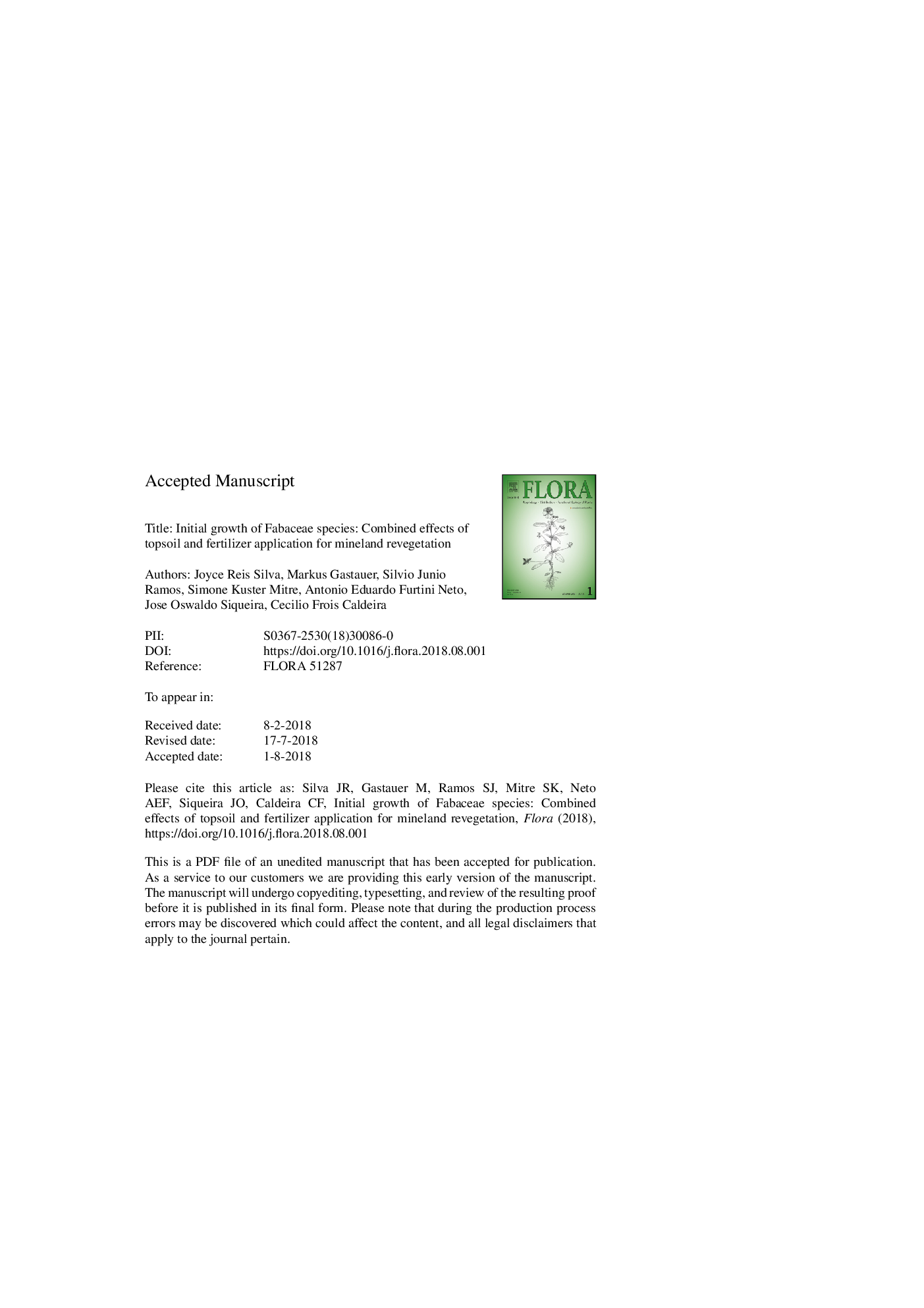| کد مقاله | کد نشریه | سال انتشار | مقاله انگلیسی | نسخه تمام متن |
|---|---|---|---|---|
| 8470127 | 1549915 | 2018 | 28 صفحه PDF | دانلود رایگان |
عنوان انگلیسی مقاله ISI
Initial growth of Fabaceae species: Combined effects of topsoil and fertilizer application for mineland revegetation
دانلود مقاله + سفارش ترجمه
دانلود مقاله ISI انگلیسی
رایگان برای ایرانیان
کلمات کلیدی
موضوعات مرتبط
علوم زیستی و بیوفناوری
علوم کشاورزی و بیولوژیک
بوم شناسی، تکامل، رفتار و سامانه شناسی
پیش نمایش صفحه اول مقاله

چکیده انگلیسی
The main challenge of mineland revegetation is the establishment of species that rapidly accumulate biomass, organic matter and nutrients. Thus, the selection of promising species requires detailed knowledge of their growth performances in different mineland environments. Four Fabaceae species native to forests or metalliferous savannas, locally termed cangas, from the Carajás Mineral Province in the eastern Amazon of Brazil and the exotic Bauhinia forficata were cultivated under greenhouse conditions in different non-fertilized and fertilized (including liming) topsoils and mining wastes. After 45 days, the biomasses, specific leaf areas, leaf nutrient contents and nodulating root percentages were measured. Initial biomass accumulation and nodulation was higher in non-fertilized topsoils than in non-fertilized mining wastes; fertilization increased initial growth in all substrates. The canga species Mimosa acutistipula var. ferrea and Parkia platycephala showed lower biomass accumulation than other species, but their lower specific leaf areas indicated higher drought tolerance, an important adaptation in seasonal climates. Furthermore, the leaf nutrient contents indicated that both canga species might be hyperaccumulators of metal ions. Among the studied species, the highest biomass accumulation was detected in the exotic B. forficata in fertilized substrates. The patterns of initial biomass accumulation and nodulation of the examined species indicated that topsoils, fertilizers and lime should be applied whenever possible to enhance overall revegetation success. Putative drought tolerance and leaf metal ion accumulation of both canga species qualify them for use in revegetation projects, whereas the large biomass accumulation of the exotic B. forficata provides scientific support for its application in revegetation projects. However, risk assessments are required before it is introduced to the Carajás Mineral Province.
ناشر
Database: Elsevier - ScienceDirect (ساینس دایرکت)
Journal: Flora - Volumes 246â247, September 2018, Pages 109-117
Journal: Flora - Volumes 246â247, September 2018, Pages 109-117
نویسندگان
Joyce Reis Silva, Markus Gastauer, Silvio Junio Ramos, Simone Kuster Mitre, Antonio Eduardo Furtini Neto, Jose Oswaldo Siqueira, Cecilio Frois Caldeira,